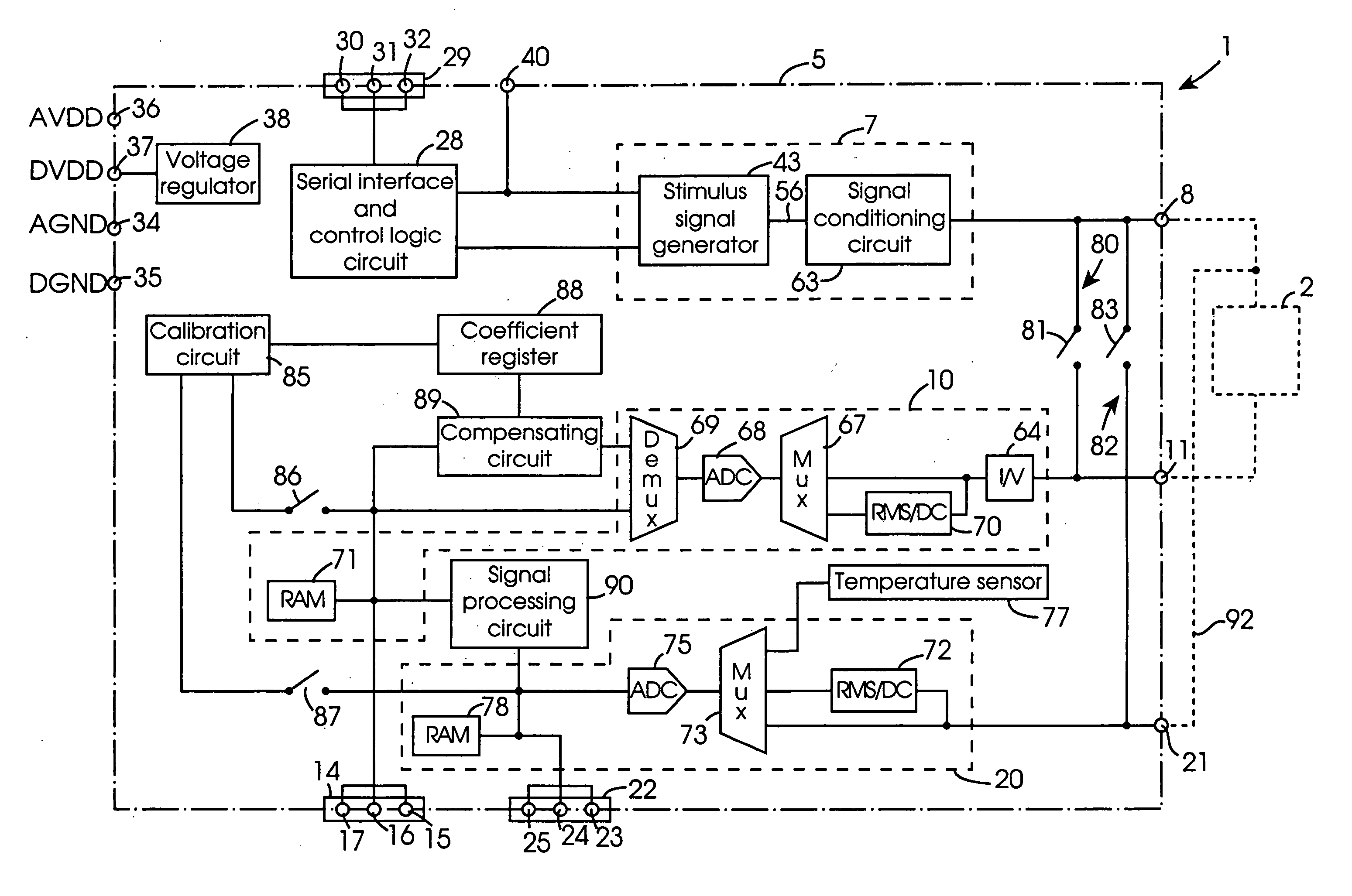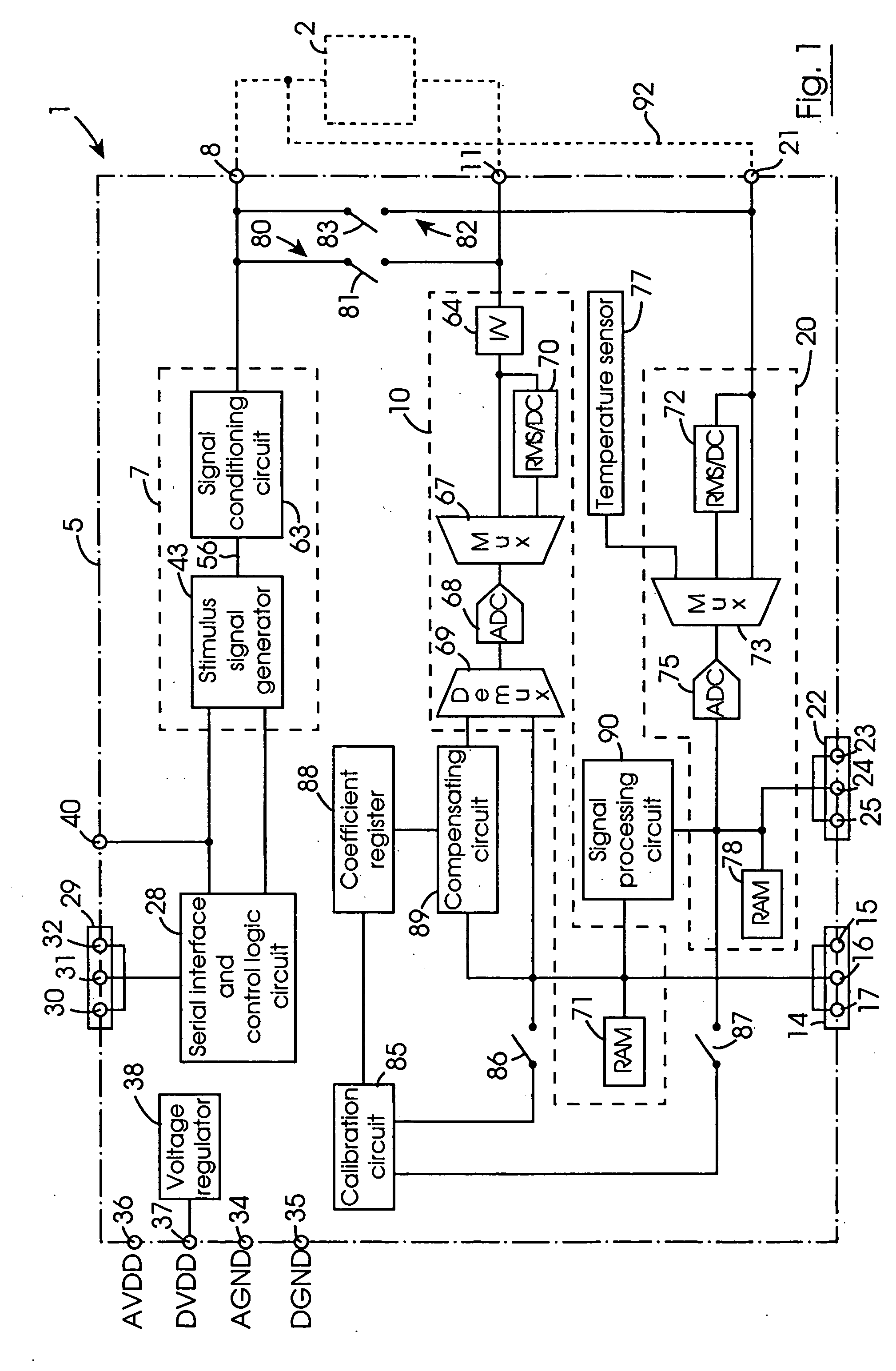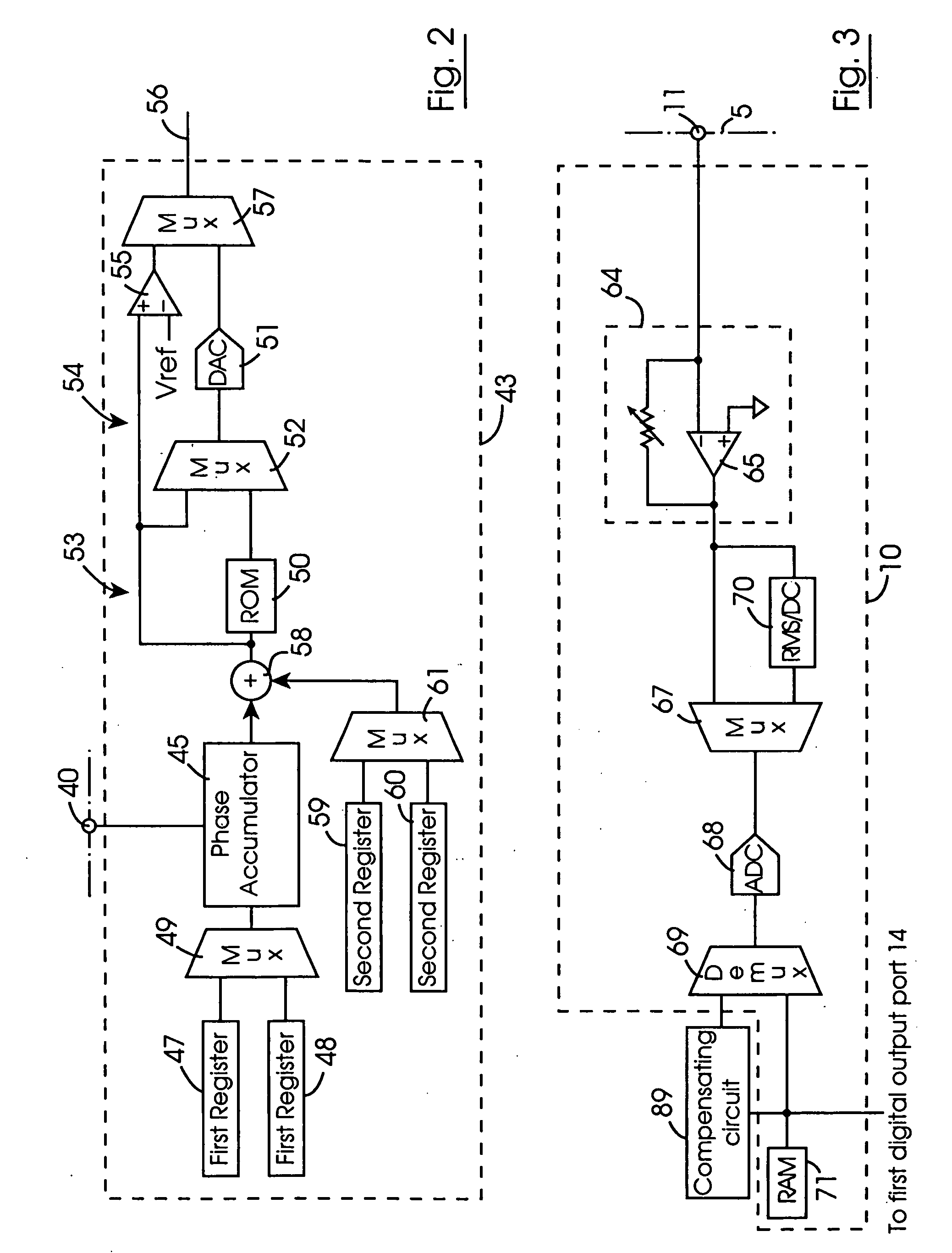Measuring circuit and a method for determining a characteristic of the impedance of a complex impedance element for facilitating characterization of the impedance thereof
a technology of complex impedance elements and measuring circuits, which is applied in the direction of resistance/reactance/impedence, measurement devices, instruments, etc., can solve the problems of cumulative errors introduced into signals by each separate circuit, complex impedance of many such sensors, and difficulty in determining the characteristic of the impedance of the complex impedance of the complex impedance of the complex sensor. achieve accurate matched, facilitate phase shift and amplitude change, and facilitate the effect of amplitud
- Summary
- Abstract
- Description
- Claims
- Application Information
AI Technical Summary
Benefits of technology
Problems solved by technology
Method used
Image
Examples
Embodiment Construction
[0053] Referring to the drawings, there is illustrated a measuring circuit according to the invention, indicated generally by the reference numeral 1, for determining a characteristic of the impedance of a complex impedance element, namely, a complex impedance circuit 2 for facilitating characterization of the impedance of the complex impedance circuit 2. In this embodiment of the invention the measuring circuit 1 applies an analog voltage stimulus signal of selectable frequencies as will be described below to the complex impedance circuit 2, and is selectively operable for outputting a first output signal which is indicative of a phase shift and an amplitude change in the stimulus signal caused by the complex impedance of the circuit 2 at respective different frequencies. The complex impedance circuit 2 may be any impedance circuit or element in which the impedance is complex, for example, a circuit with complex impedance, a characteristic of the impedance of which is to be determi...
PUM
 Login to View More
Login to View More Abstract
Description
Claims
Application Information
 Login to View More
Login to View More - R&D
- Intellectual Property
- Life Sciences
- Materials
- Tech Scout
- Unparalleled Data Quality
- Higher Quality Content
- 60% Fewer Hallucinations
Browse by: Latest US Patents, China's latest patents, Technical Efficacy Thesaurus, Application Domain, Technology Topic, Popular Technical Reports.
© 2025 PatSnap. All rights reserved.Legal|Privacy policy|Modern Slavery Act Transparency Statement|Sitemap|About US| Contact US: help@patsnap.com



